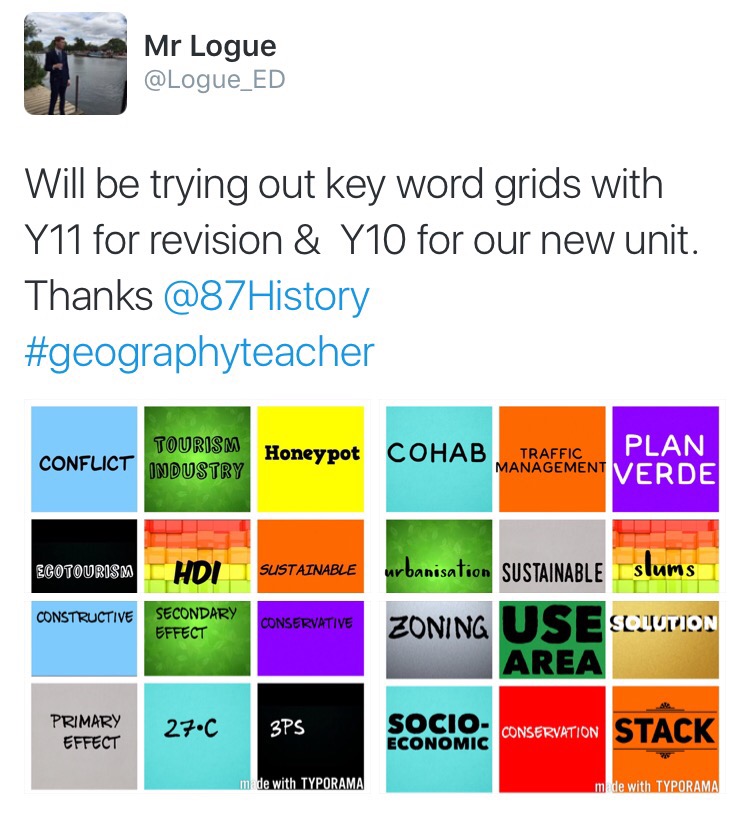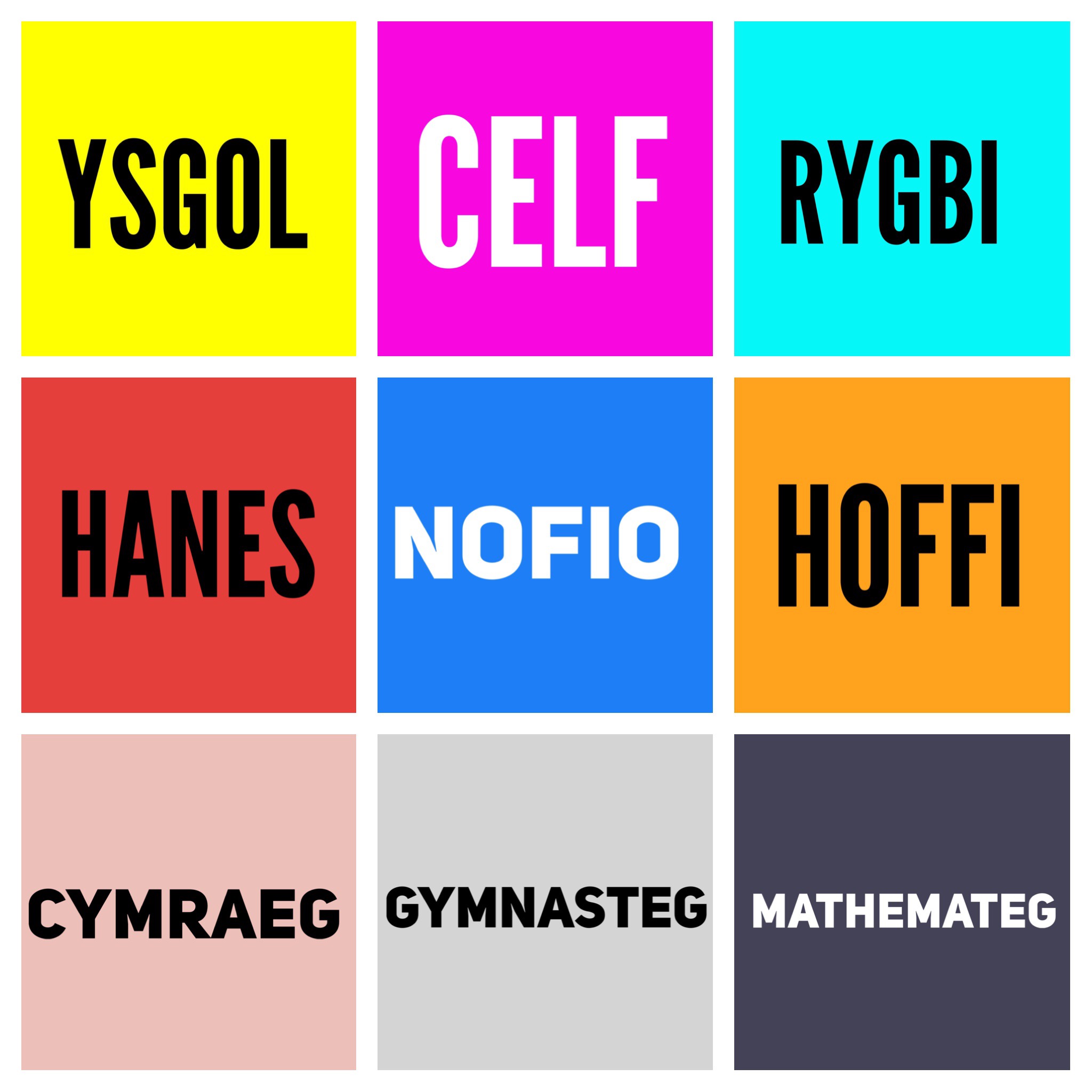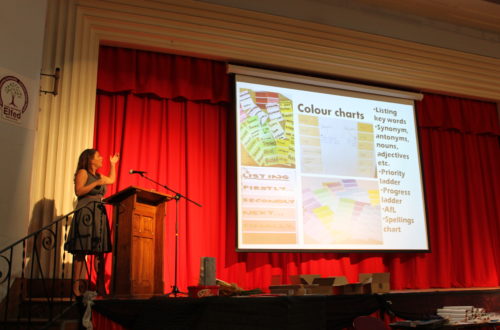Keyword grids are so simple and easy to create, brilliant for teachers! There are lots of different ways the keyword grids can be used, again brilliant for teachers and students!
I created my keyword grids using the Moldiv app, with the photo collage feature and the text was created using the Typorama app. However, the grid can easily be created on Word, PowerPoint or Keynote.
Here are ten different ways I have come up with to use the keyword grids for teaching and learning:
Provide a definition of the keyword. Simple. Project the grid onto the board and students have to write down definitions explaining in their own words the meanings of the different terms that are connected to the subject, topic or lesson.
Use the keyword in a sentence. This is a good activity to test student understanding and ensure they can use keywords in the correct context.
If this is the answer what is the question? A popular and well-known quiz with a twist, where students have to come up with different possible questions where the keyword would be the correct answer.

Tell me what you know! Students have to write any key facts or information they know about each subject-specific terminology. This goes further than providing a definition, as it can include examples, stats, information etc.
Keyword paragraph. Students have to write a paragraph, with the aim to include as many of the keywords as they can.
Think and link. Ask students to make links between the different keywords. Students make the links then explain the connections. This helps when providing an overview of a topic and analysis.
Literacy grid. The grid can be used in different ways connected to literacy such as listing synonyms or antonyms for each of the words.
GCSE/A-Level. The keyword grid can be adapted for different subjects and year groups. I have lots of examples at key stage three but this is a great GCSE/A-Level revision activity. Again, explain the term, what information do you know about the term or write an exam answer including all of the keywords. @Logue_ED seen this idea shared on my Twitter account, a few hours later he then made his own revision keyword grid as a revision activity for his GCSE class! He has also suggested to glue the grid in books to annotate.

Narrative. The keywords can be used to act as a prompt for students writing a story. Each keyword will lead to the next part of their story. Students could use the keywords in a specific sequence or any order depending on your/their choice.
MFL. As a teacher of MFL I have used the keyword grid in various ways, with the ideas mentioned above, such as use it in a sentence, create a paragraph, translate keywords and if this is the answer what is the question?

The keyword grid can also be easily differentiated. This could be by colour, so that words in blue for example are more difficult and aim to challenge the more able and gifted students. In another colour, yellow for example again could be words that all students should be able to access. Instead of colours it could be by rows or square, each row or square increasing in difficulty. The grid can vary in size, depending on how many keywords you wish to include.
Thanks for taking the time to read my post. If you’ve been inspired by any of these ideas I’d love to hear from you to find out how you’ve taken them / adapted or remixed them and used them in your classroom. Please feel free to follow my blog and leave comments below or why not just drop me a message on Twitter.






One thought on “Keyword grids for learning! ”